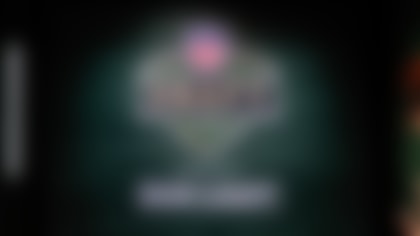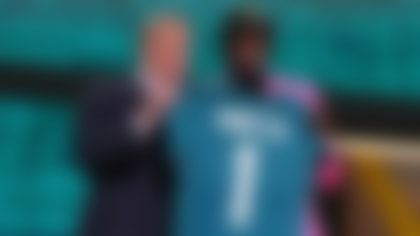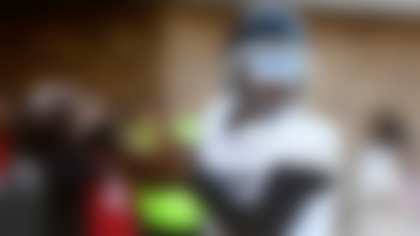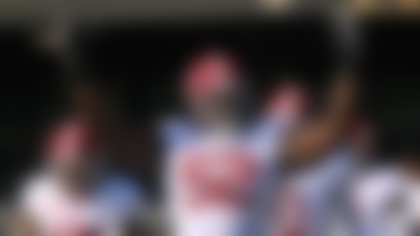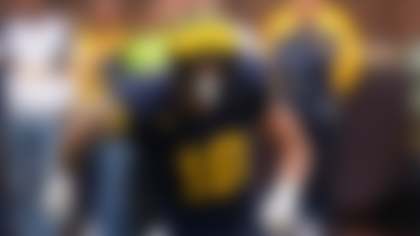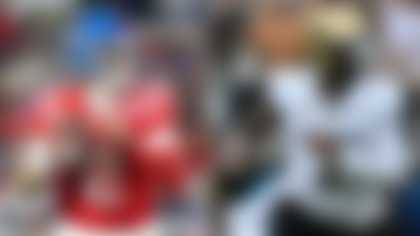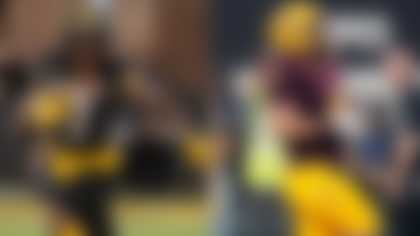To celebrate Super Bowl 50, NFL Media's Elliot Harrison is looking back at each of the 19 Super Bowl rematches on the regular-season schedule in 2015, revisiting the clashes of the past as former Super Sunday opponents square off once again.
This Sunday's rematch: Baltimore Ravens at San Francisco 49ers, 4:25 p.m. ET.
Reunites the combatants from: Super Bowl XLVII (Ravens 34, 49ers 31).
Conspiracy theories abound these days, like Yanni records in a hot yoga studio. It's getting pretty ridiculous. FDR knew Pearl Harbor was getting bombed before it happened. Astronauts landed on a soundstage in Arizona, not the moon. David Stern made sure the Knicks got Patrick Ewing in '85.
And the NFL kicked out the lights in the Superdome to cool off the Ravens, get the 49ers back in the game and/or make the Super Bowl interesting.
Here's a theory to stick in your vinyl collection: The difference in quality between competitors is so razor thin that any -- any -- let-up will allow a really freaking good football team back in the game. How about that? You can give me a Pulitzer for that brilliant piece of writing later. Or not.
To review, the Ravens had played quality football for two-plus quarters in Super Bowl XLVII, executing a brilliant offensive game plan to move the football on the league's second-best scoring defense.
Joe Flacco was effective if not outstanding in the first half, completing 13 of 20 passes for 192 yards, three touchdowns and no picks. He looked more relaxed than, well, Joe Flacco at an AFC Championship Game, leading the Ravens on scoring marches of 51, 75 and 56 yards to build a 21-6 halftime lead. Meanwhile, the consistent use of the ground attack (the Ravens finished the game with 35 carries overall) kept San Francisco's front seven on its heels, reacting rather than anticipating.
To make matters worse, Jacoby Jones seemingly sealed the deal for the Ravens on the opening kick of the second half, dancing his way to a 108-yard return TD.
Then, a short time later, the lights went out. Literally.
You saw it. Well, sort of -- after all, the lights were out. Three plays into the next possession, the San Francisco offense and the Baltimore defense had to sit and wait ... and wait. About 34 minutes later, the game resumed, and the 49ers made a contest out of Super Bowl XLVII.
Colin Kaepernick led an 80-yard drive that ended with a nice run-after-the-catch touchdown effort by Michael Crabtree. A big punt return set up a Frank Gore TD run, and it was 28-20. Then a Ray Rice fumble on the next possession allowed the 49ers to get a gimme David Akers field goal.
Pay attention, conspiracy theorists -- your overactive brains and the hit the lights conspiracy theory were firing on all cylinders, with the score suddenly 28-23.
OK, but the Ravens weren't shrinking violets, either; Justin Tucker hit a pair of field goals to re-expand Baltimore's lead. Nonetheless, there was that pesky athletic QB, who squeezed a touchdown scamper in between those kicks to keep San Francisco within striking distance.
So, with less than five minutes to play and the Niners down by five points, San Francisco mounted its final surge, advancing to the Ravens' 7-yard line with a first-and-goal. Call what followed the sequence of the game -- the sequence of the 2012 season.
First-and-goal from the 7: The Niners go basic, running LaMichael James up the middle for 2 yards. Basically, this is a let's-make-second-down-more-manageable-and-maybe-get-lucky play.
Second-and-goal from the 5: Niners offensive coordinator Greg Roman calls a designed roll-out by Kaepernick, with Vernon Davis and Crabtree as his primary targets. Two problems: 1) This shrank the field, allowing several Ravens defenders to flood that side of the end zone, and 2) Crabtree could have taken his defender deeper before coming back for the ball, thus leaving Kaepernick a larger window. Instead, the pass falls incomplete.
Fourth-and-goal from the 5: Roman again limits Kaepernick's reads, calling for a back-shoulder fade to Crabtree toward the right corner. Baltimore defensive coordinator Dean Pees calls for a blitz right up the gut. Kaepernick feels the pressure in his face and responds by heaving the ball in Crabtree's direction. Yes, there's contact between corner Jimmy Smith and the receiver, but not enough for a penalty to be called. Honestly, it appeared as though Crabtree initiated it.
Four-and-out, Baltimore football. And, after a clock-burning safety ... Baltimore Lombardi Trophy.
The game's MVP? Joe Flacco, who capped off a spectacular playoff run (11 TD, 0 INT) with a fine Super Bowl performance, particularly on the money down:
Joe Flacco on third down -- Super Bowl XLVII
Att-Comp: 7-10
Passing Yards: 158
Yards per Att: 15.8
TD-INT: 2-0
Passer Rating: 152.1*
* The highest possible passer rating is 158.3
And that, my friends, is how you get this.
A note on Super Bowl XLIII
Another Super Bowl rematch taking place on Sunday: Cardinals-Steelers, which reunites the participants from Super Bowl XLIII. That Super Bowl will go down as one of the best ever, with a finish -- Santonio Holmes' catch-and-drag to put the Steelers ahead with under a minute to play -- to rival that of any preceding Super Bowl. But for many, James Harrison's 100-yard interception return as time expired in the first half was the play of the game.
Harrison read Kurt Warner's eyes, stepping in front of a slant route before taking off on a gallop that took him the length of the field. It became apparent during the runback that time would run out. And even though Harrison was tackled, he managed to get across the goal line for a score that Pittsburgh ultimately needed to win its sixth Lombardi Trophy.
Here is a debatable top-five list of the greatest defensive plays in Super Bowl history:
5) Bob Lilly chases and corrals Bob Griese for a 29-yard loss in Super Bowl VI.
4) Team effort: The 49ers' goal-line stand preserves victory in Super Bowl XVI.
3)Jack Squirek's pick-six of Joe Theismann to put the Raiders up 21-3 at halftime of Super Bowl XVIII.
2)Harrison goes the length of the field in Super Bowl XLIII.
1)Malcolm Butler's read-and-react interception to seal Super Bowl XLIX.
A note on Super Bowl IV
The third Super Bowl rematch this week is Chiefs at Vikings, which features the teams that squared off in Super Bowl IV. That Super Bowl will never be considered a classic. Well, save for Chiefs head coach Hank Stram being mic'd up by NFL Films -- still the best NFL open-mic gig ever. "Just keep matriculating the ball down the field, boys."
On the significance meter, however, Vikings-Chiefs deserves its due. When the Jets upset the mighty Coltsin Super Bowl III, it was perhaps the most transcendent win in pro football history. Yet, there were many old-guard holdouts who still felt the AFL was the weaker of the two leagues. With a merger between the NFL and AFL looming in 1970, Kansas City needed to show up (unlike during the second half of Super Bowl I) to represent the viability of both itself and all of the 10 member clubs in the American Football League. By prevailing handily, 23-7, the Chiefs not only accomplished that task, but promoted the competitive balance of the newly integrated, 26-team National Football League.
The AFL might have gone into the history books as a league whose time had run its course, but its legacy is seen in the competitive balance between the AFC and NFC today. This Super Bowl was big, even if it did serve as the follow-up act to a bigger guarantee.
Follow Elliot Harrison on Twitter @HarrisonNFL.

